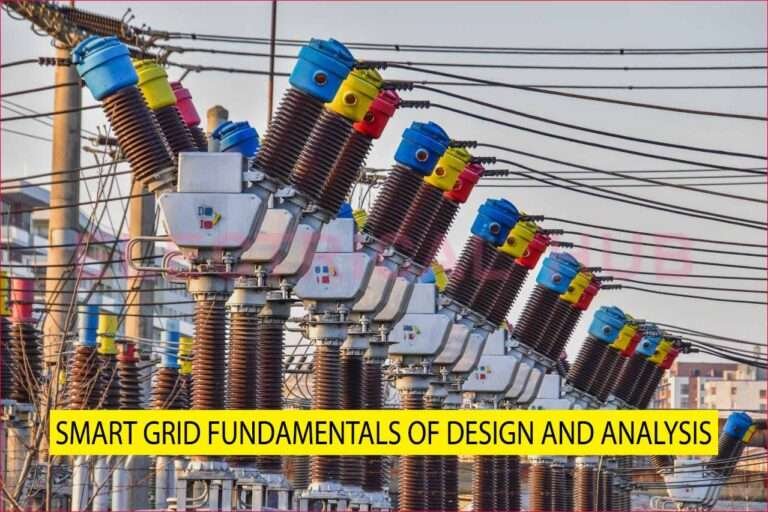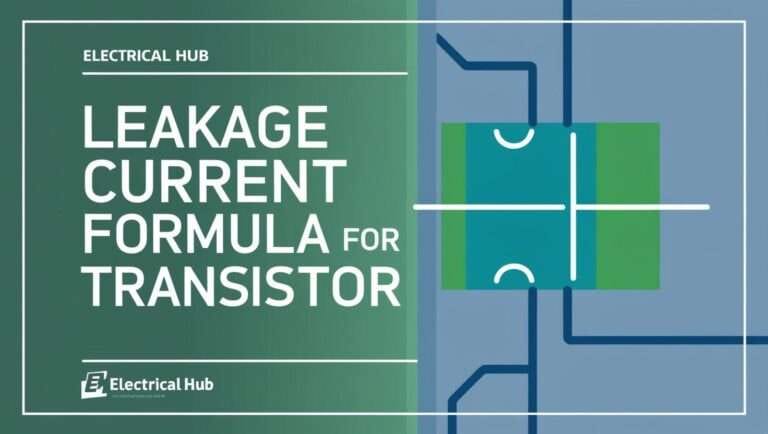Leakage Current in Capacitor: Best Guide
Leakage current in capacitor is a critical parameter in electronics. It determines how much charge a capacitor loses over time. This seemingly minor effect can have serious consequences in precision circuits and power applications. Understanding this current, its causes, and how to control it is essential for engineers and designers.
Capacitors are designed to store energy. Ideally, they should hold their charge indefinitely. However, in real-world applications, some current always leaks through the dielectric material. This current, known as leakage current in capacitor, flows even when the capacitor is not connected to a complete circuit.

Leakage current is especially important in devices like timers, filters, memory retention systems, and energy storage. Let’s break down the concept in technical terms and real-life scenarios.
What Causes Leakage Current in Capacitor
Leakage current in capacitor is mainly caused by imperfections in the dielectric material. All capacitors have two conducting plates separated by an insulating layer known as the dielectric. Ideally, the dielectric should block all current. In practice, it allows a small amount of current to pass.
Several factors influence the amount of leakage:
- Type and quality of dielectric
- Operating temperature
- Applied voltage
- Age and physical condition of the capacitor
Electrolytic capacitors, for example, have higher leakage currents than film or ceramic capacitors. This is due to their electrolyte-based dielectric, which is more conductive than solid materials.
Leakage Current Formula for Capacitor
The leakage current in a capacitor can be estimated using the following formula:
I_leak = V / R_ins
Where:
I_leak = leakage current (in amperes)
V = voltage across the capacitor (in volts)
R_ins = insulation resistance of the dielectric (in ohms)
This simple formula gives insight into the behavior of the leakage current. A higher insulation resistance results in lower leakage. For high-performance circuits, selecting a capacitor with a high R_ins value is essential.
Leakage Current Electrolytic Capacitor
Electrolytic capacitors are widely used due to their high capacitance values. But they come with a disadvantage—high leakage current.
This is primarily because the dielectric in these capacitors is a very thin layer of oxide on the anode aluminum, maintained by the presence of an electrolyte.
The leakage current in electrolytic capacitors typically increases:
- With temperature
- With voltage
- Over time if not properly reformed
In some applications like power supplies or timing circuits, this current may interfere with normal operation. Designers must consider this during the selection process.
Typical leakage current in an electrolytic capacitor can be estimated using the formula provided by most manufacturers:
I_leak = 0.01CV or 3μA, whichever is greater
Where:
C = capacitance in microfarads
V = rated voltage in volts
For example, a 100μF capacitor rated at 25V would have:
I_leak = 0.01 × 100 × 25 = 25μA
This is the worst-case scenario, often higher than other capacitor types.
Leakage Current Supercapacitor
Supercapacitors, also known as ultracapacitors, store large amounts of energy. They have very high capacitance values—up to thousands of farads. But with great capacity comes greater leakage.
Leakage current in supercapacitor is a natural result of its design. The large surface area and porous materials used in construction allow more current paths. Also, the electrolyte in supercapacitors is more conductive than in regular capacitors.
Leakage in supercapacitors is higher than in other types, especially shortly after charging. Over time, the current tends to stabilize. But even when stable, the leakage current remains significant. That’s why supercapacitors are not suitable for applications where charge must be held for long periods without loss.
Here’s a table showing typical leakage values:
| Capacitor Type | Capacitance | Rated Voltage | Typical Leakage Current |
|---|---|---|---|
| Ceramic Capacitor | 0.1μF | 50V | < 0.01μA |
| Electrolytic Capacitor | 100μF | 25V | 25μA |
| Supercapacitor | 10F | 2.7V | 1mA – 10mA |
As shown, the leakage current in supercapacitor is dramatically higher than in other types.
Factors Affecting Leakage Current in Capacitor
The leakage current in capacitor can vary due to several external and internal factors:
Temperature: Higher temperatures reduce insulation resistance, increasing leakage.
Voltage Stress: Operating close to or above the rated voltage accelerates dielectric breakdown.
Dielectric Type: Ceramic dielectrics leak the least. Electrolytic types leak the most.
Age: Over time, electrolytes can dry out, and dielectric materials degrade. This increases leakage.
Moisture and Contamination: External contaminants on the capacitor surface can create current paths.
All these parameters must be considered when designing reliable electronic systems.
How to Reduce Leakage Current in Capacitor
To minimize leakage current in capacitor, follow these design and selection tips:
- Choose capacitors with low-leakage dielectrics such as Tantalum or Ceramic.
- Operate below the rated voltage.
- Avoid high temperatures.
- Store components properly to prevent degradation.
- Use capacitors with specifications suited for your application.
For critical circuits, always consult the datasheets. Some manufacturers provide leakage test values at 25°C and at specific voltages.
Importance of Leakage Current in Precision Circuits
In analog and precision digital circuits, even a few microamperes of leakage current can cause errors. In sample-and-hold circuits, filters, or battery-powered devices, a high leakage current can result in voltage drift or battery drain.
Power engineers must also take leakage into account when using large energy storage capacitors. In such cases, the leakage current in supercapacitor is not just a nuisance—it’s a design constraint.
Comparison with Other Semiconductor Devices
Leakage current is not limited to capacitors. It also exists in other electronic components.
For instance, in a transistor, leakage current can occur between collector and base when the emitter is open. This is explained using the Leakage Current Formula for Transistor, which also helps designers ensure reliability in switching applications.
Similarly, Leakage Current in Transistor becomes a factor in digital circuits and amplifiers, especially in high-temperature environments.
Leakage Current in Diode arises due to reverse-bias current flow. Though small, it can disrupt low-current or high-impedance circuits.
Compared to these, leakage current in capacitor is usually more predictable but still demands attention.
Conclusion
Leakage current in capacitor is a small but important electrical characteristic. It affects performance, reliability, and energy efficiency. Whether dealing with electrolytic capacitors, supercapacitors, or ceramic types, understanding leakage behavior is crucial.
By knowing the leakage current formula for capacitor, designers can estimate and plan for the impact. Selecting the right capacitor and using it in appropriate conditions helps minimize leakage and maintain system stability.
Follow Us on Social:
Subscribe our Newsletter on Electrical Insights for latest updates from Electrical Engineering Hub
#LeakageCurrent, #CapacitorLeakage, #ElectronicsBasics, #CapacitorDesign, #ElectricalEngineering, #CircuitDesign, #LeakageCurrentInCapacitor, #CapacitorTesting, #ElectronicComponents, #PowerLoss, #DielectricLeakage, #CapacitorBehavior, #PassiveComponents, #InsulationResistance, #EngineeringTips




